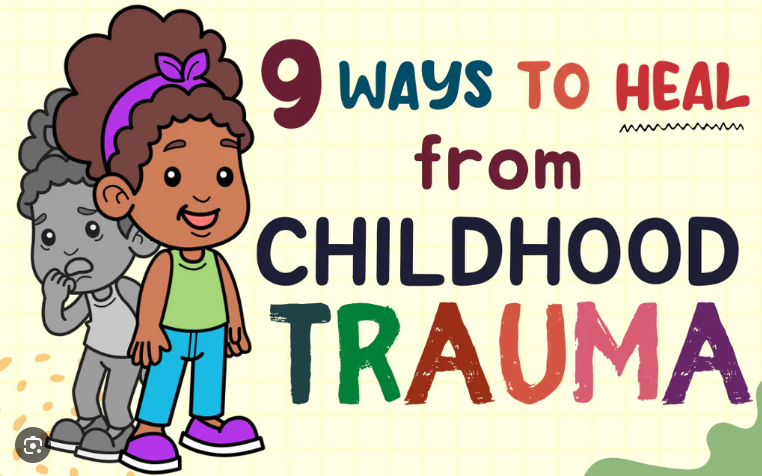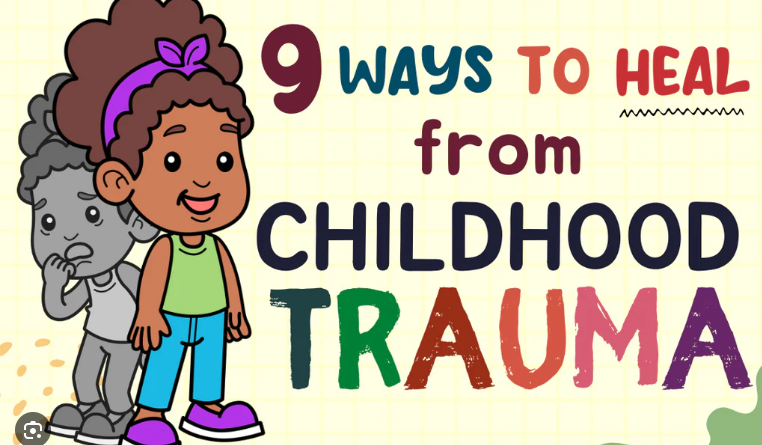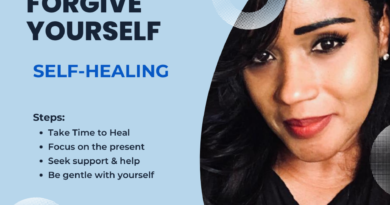9 Critical Tips for Healing Childhood Trauma
9 Critical Tips for Healing Childhood Trauma
Introduction

Healing from childhood trauma can be a challenging and complex journey. The impact of childhood trauma can manifest in various ways, affecting our emotional, mental, and physical well-being. However, there are key strategies and techniques that can help us navigate this healing process. Over the subsequent paragraphs, I will explore nine critical tips for healing childhood trauma, offering guidance and support along the way.
Before we dive into the tips, it’s essential to acknowledge that healing from childhood trauma is a deeply personal and individual process. What works for one person may not work for another. It’s crucial to be patient and compassionate with yourself as you embark on this healing journey.
1: Be Aware of Overreactions
Childhood trauma can often lead to heightened emotional responses and overreactions to certain triggers. Being aware of these overreactions is the first step towards healing. Take the time to reflect on situations where you find yourself reacting disproportionately to the present moment. Ask yourself why these reactions occur and what memories or emotions they may be connected to. By acknowledging and understanding these overreactions, you can begin to separate your past experiences from your present reality.
It’s important to note that awareness does not necessarily mean immediate resolution. Healing takes time, and it’s expected to continue experiencing these overreactions while you work through your trauma. Patience and self-compassion are essential as you navigate this process.
For example, I often find myself becoming defensive and shutting down during conflict. Through self-reflection, I realized that this reaction stemmed from a traumatic event in my childhood where my opinions were dismissed and invalidated. Recognizing this connection has allowed me to approach conflicts with a greater sense of understanding and empathy.
2: Quickly Write Down Three Traumatic Episodes You Experienced Growing Up
Writing down three traumatic episodes from your childhood can be a powerful exercise in understanding and processing your past experiences. Take a moment to reflect on significant events that you believe have had a lasting impact on your life. These episodes could range from instances of abuse or neglect to moments of emotional turmoil.
Once you have identified these episodes, write them down in detail. Describe the emotions you felt, the people involved, and the circumstances surrounding each event. This exercise allows you to externalize your experiences and gain a new perspective on them. It also serves as a starting point for further exploration and healing.
For instance, I vividly remember a time when my parents had a heated argument that turned physical. As a child, I felt terrified and helpless, believing that the violence was my fault. Writing down this episode helped me recognize how deeply it had impacted my sense of safety and trust in relationships.
3: Think it Through
Once you have written down your traumatic episodes, take the time to think them through. Reflect on the emotions that arise as you revisit these memories. Consider how these experiences have shaped your beliefs, behaviors, and relationships.
Thinking through your traumatic episodes allows you to better understand their impact on your life. It can help you identify patterns and triggers that may be contributing to your current struggles. This process of reflection and introspection is integral to the healing journey.
For example, as I thought through my childhood traumatic episodes, I realized that I had developed a fear of abandonment. This fear influenced my tendency to cling to relationships, even when they were unhealthy or toxic. Understanding this pattern has empowered me to make healthier choices and prioritize my well-being.
Get your copy of Marion Wallace’s book, Ghettos Forgotten Daughters!
4: Create a Calming Effect Using the RAIN Approach
The RAIN approach, developed by psychologist Tara Brach, is a powerful tool for healing childhood trauma. It stands for Recognize, Acknowledge/accept/allow, Investigate, and Non-identification.
Recognize: Begin by recognizing and acknowledging the emotions and sensations that arise as you revisit your traumatic experiences. Allow yourself to feel and validate these emotions without judgment fully.
Acknowledge/accept/allow: Accept and allow these emotions to be present. Avoid suppressing or pushing them away. Give yourself permission to experience them fully.
Investigate: Dive deeper into the emotions and sensations you are experiencing. Explore the thoughts and beliefs that arise. Challenge any negative self-talk or distorted perceptions that may be contributing to your trauma.
Non-identification: Refuse to identify with your traumatic experiences. Recognize that they are part of your past, but they do not define you. Separate your sense of self from the trauma you have experienced.
The RAIN approach provides a framework for creating a calming effect during moments of emotional distress. By implementing this approach, you can cultivate a sense of presence, compassion, and self-awareness.
5: Gather Information
Healing from childhood trauma often requires education and understanding. Take the time to gather information about trauma, its effects on the brain and body, and the various therapeutic approaches available.
Learning about trauma can help you make sense of your experiences and provide validation for your feelings. It can also equip you with tools and strategies to support your healing process.
Many reputable resources, such as books, articles, and podcasts, delve into the topic of childhood trauma. Seek out information that resonates with you and aligns with your values.
6: Allow Yourself to Feel Pain
One of the most challenging aspects of healing childhood trauma is allowing yourself to feel the pain associated with it. It’s natural to want to avoid or numb these emotions, but doing so only prolongs the healing process.
Give yourself permission to feel the pain, grief, and anger that may arise as you confront your trauma. Cry if you need to, scream if you feel the urge. Allow these emotions to flow through you and release their hold on your well-being.
Remember that feeling pain is a necessary part of the healing journey. True healing and transformation can occur through feeling and processing these emotions.
7: Write Down
Writing down your thoughts, feelings, and reflections throughout the healing process can be incredibly therapeutic. Journaling allows you to externalize your experiences, gain clarity, and track your progress.
Write freely and without judgment. Explore your emotions, fears, and hopes. Use your journal as a safe space to express yourself fully.
As you write, you may notice patterns, insights, and moments of growth. Celebrate these milestones and use them as motivation to continue on your healing journey.
8: Tell Someone Your Story
Sharing your story with someone you trust can be a transformative experience. Find a supportive friend, family member, therapist, or support group and open up about your childhood trauma.
Telling your story not only provides a sense of relief and validation but also allows others to bear witness to your experiences. It can be a powerful step towards healing and reclaiming your narrative.
Choose someone who will listen without judgment and offer empathy. Remember that you are in control of how much or how little you share. Only share what feels comfortable for you.
9: Create a Coherent Narrative
As you progress on your healing journey, strive to create a coherent narrative of your childhood trauma. This narrative should reflect your growth, resilience, and the lessons you have learned along the way.
Creating a coherent narrative involves integrating your traumatic experiences into your life story in a way that empowers you. It’s about reframing your past and finding meaning and purpose in your journey.
Seek support from a therapist or counselor who specializes in trauma if you need guidance in shaping your narrative. They can provide valuable insights and help you navigate any challenges that may arise.
Additional Reading:
Embracing the Unknown: Exiting Your Cage of Comfort to Pave a Path to a New Future
Nurturing the Souls of Black Women: The Empowering Essence of Self-Love!
Conclusion
Healing from childhood trauma is a courageous and transformative process. By being aware of overreactions, reflecting on your traumatic episodes, utilizing the RAIN approach, gathering information, allowing yourself to feel pain, writing down your thoughts, sharing your story, and creating a coherent narrative, you can embark on a journey of healing and growth.
Remember, healing takes time, and there is no one-size-fits-all approach. Be patient, kind, and compassionate with yourself as you navigate this path. You are deserving of healing, and with perseverance and support, you can overcome the effects of childhood trauma and reclaim your life.





